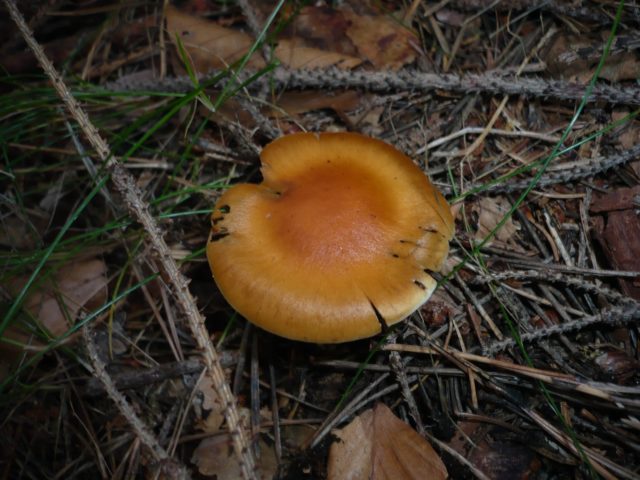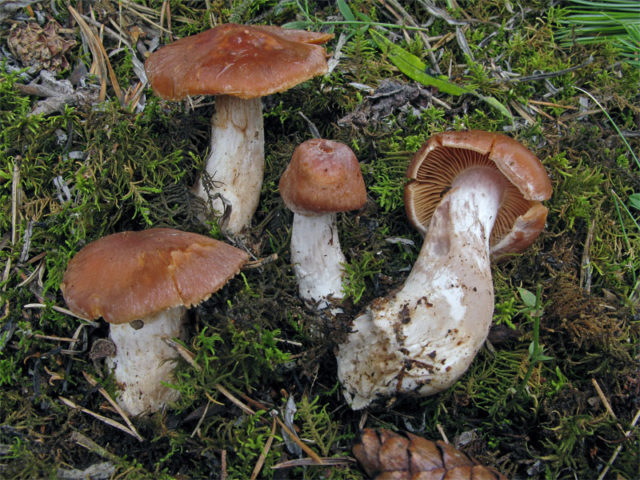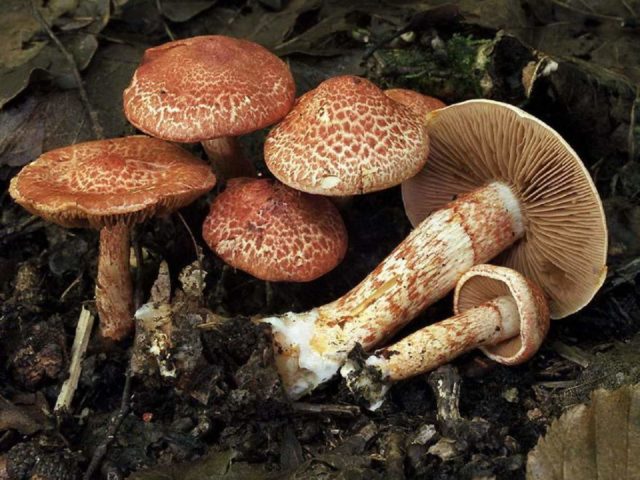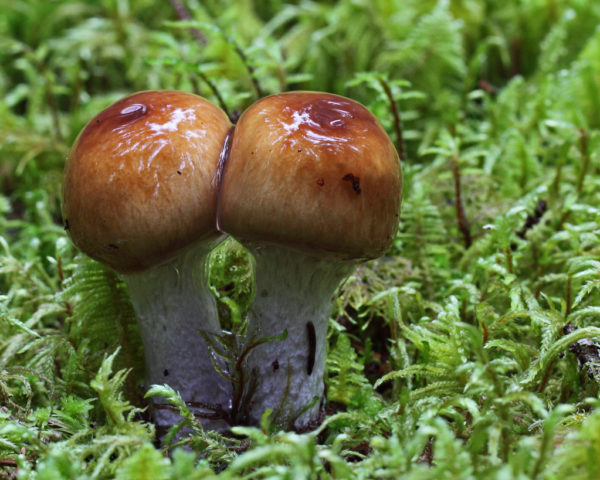Content
Spiderweb orange or apricot yellow belongs to the category of rare mushrooms and is one of the representatives of the Spiderweb family. It can be recognized by its glossy surface and the apricot yellow color of the cap. It occurs most often in small groups, less often singly. In official reference books it is listed as Cortinarius armeniacus.
Description of the orange webcap

The orange webcap prefers the neighborhood with spruces and acidic soil
This species has a standard fruiting body shape. Therefore, his cap and leg are clearly pronounced. But in order not to make a mistake with the choice when collecting mushrooms, you should study the features of the appearance.
Description of the hat
The upper part of the orange webcap is initially convex, and subsequently opens up and becomes flat. In some specimens, a tubercle is sometimes retained in the center. The diameter of the upper part can reach 3-8 cm. The hat has the ability to absorb moisture. After rain, it begins to shine and is covered with a thin mucous layer. When dry, it has an ocher-yellow tint, and when moistened, it acquires an orange-brown color.

With high humidity, the mushroom cap becomes glossy.
On the reverse side there are frequent brownish-brown plates, adherent with a tooth. During the ripening period, the spores acquire a rusty brown hue.
The spores are elliptical and densely warty. Their size is 8-9.5 x 4.5-5.5 microns.
Leg description
The leg is cylindrical, widened at the base, with a weakly expressed tuber. Its height reaches 6-10 cm, and its cross-sectional diameter is 1.5 cm.

The leg maintains a dense structure throughout the entire growth period
The surface is silky white with barely noticeable light bands. When cut, the flesh is firm without any voids.
Where and how it grows
This species prefers to grow in conifers, but to a greater extent in spruce forests. The fruiting season begins at the end of July and lasts until early October.
Widely distributed in Eurasia and North America.
Is the mushroom edible or not
The orange webcap is considered conditionally edible. Therefore, it should be eaten only after preliminary boiling for 15-20 minutes. Then you can stew, marinate, bake, combining with other mushrooms and vegetables.
Doubles and their differences
There are several mushrooms that are similar in appearance to the orange spiderweb. Therefore, in order not to be mistaken when collecting, you need to know their characteristic differences.
Doubles:
- Peacock webcap. Poisonous mushroom. It can be recognized by its scaly, brick-orange cap with ragged edges. The leg is dense, strong, the pulp is fibrous, odorless. The lower part is also covered with scales. Grows in mountainous areas near beeches. The official name is Cortinarius pavonius.
The hat of this species remains dry even at high humidity.
- Slime cobweb. Belongs to the category of conditionally edible, therefore, requires preliminary processing. It is characterized by a large cap and a large amount of mucus on it. The color of the upper part is brown or brown. The leg is fusiform. Grows in pine and mixed forests. The official name is Cortinarius mucifluus.
Slime in this species flows down even along the edge of the cap.
Conclusion
The orange webcap is not often found in the forest, so it is not very popular with mushroom pickers. In addition, few can distinguish it from inedible species, and therefore, in order to avoid mistakes, bypass it.










